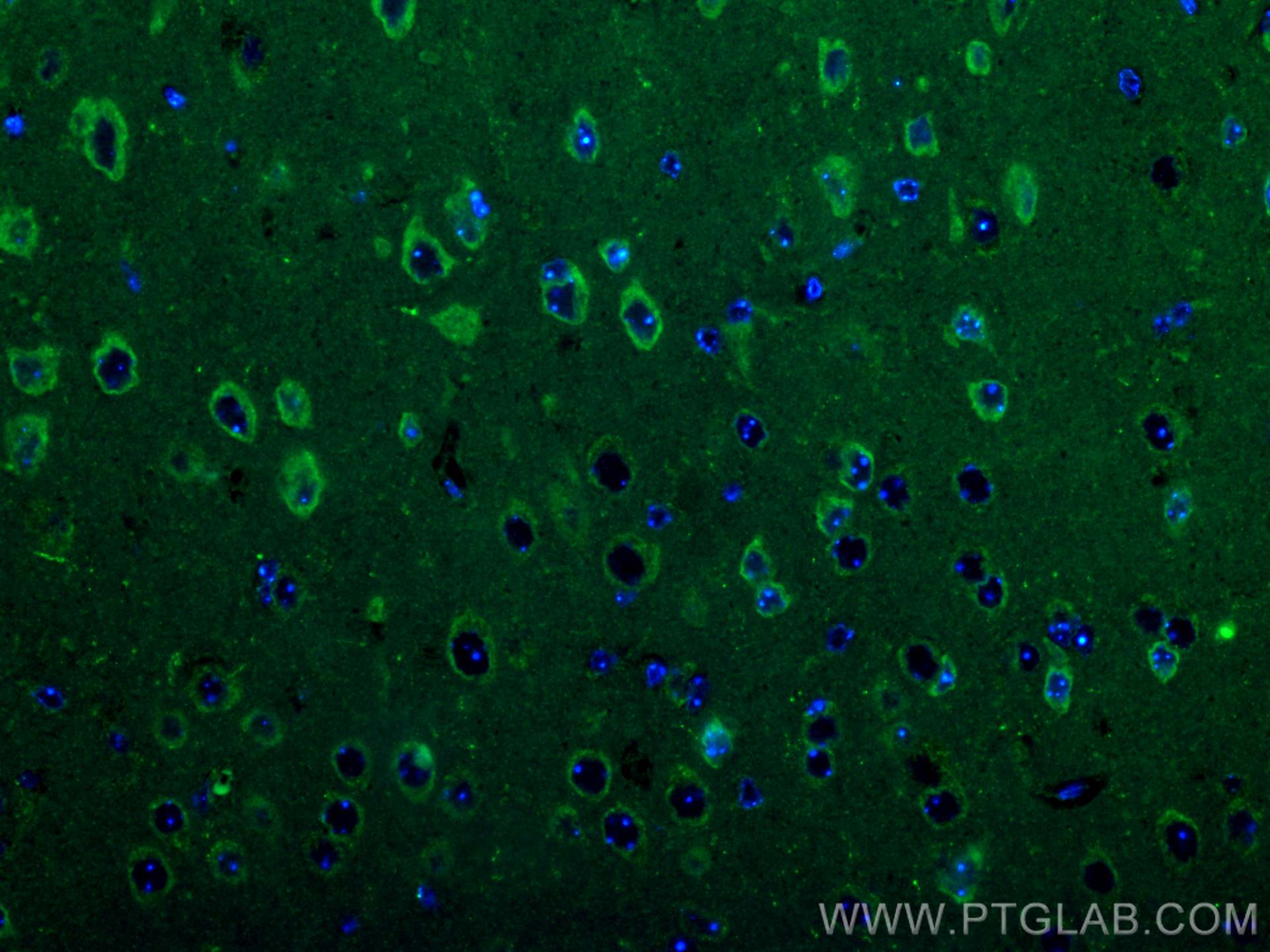验证数据展示
经过测试的应用
| Positive IF-P detected in | mouse brain tissue |
推荐稀释比
| 应用 | 推荐稀释比 |
|---|---|
| Immunofluorescence (IF)-P | IF-P : 1:50-1:500 |
| It is recommended that this reagent should be titrated in each testing system to obtain optimal results. | |
| Sample-dependent, Check data in validation data gallery. | |
产品信息
CL488-10944 targets CRH/CRF in IF-P applications and shows reactivity with human, mouse, rat samples.
| 经测试应用 | IF-P Application Description |
| 经测试反应性 | human, mouse, rat |
| 免疫原 | CRH/CRF fusion protein Ag1371 种属同源性预测 |
| 宿主/亚型 | Rabbit / IgG |
| 抗体类别 | Polyclonal |
| 产品类型 | Antibody |
| 全称 | CRH/CRF |
| 别名 | CRH, CRF, Corticotropin-releasing hormone, Corticotropin-releasing factor, Corticotropin releasing factor |
| 计算分子量 | 21 kDa |
| 观测分子量 | 35-38 kDa |
| GenBank蛋白编号 | BC011031 |
| 基因名称 | CRH |
| Gene ID (NCBI) | 1392 |
| RRID | AB_3083889 |
| 偶联类型 | CoraLite® Plus 488 Fluorescent Dye |
| 最大激发/发射波长 | 493 nm / 522 nm |
| 形式 | Liquid |
| 纯化方式 | Antigen affinity purification |
| UNIPROT ID | P06850 |
| 储存缓冲液 | PBS with 50% Glycerol, 0.05% Proclin300, 0.5% BSA, pH 7.3. |
| 储存条件 | Store at -20°C. Avoid exposure to light. Stable for one year after shipment. Aliquoting is unnecessary for -20oC storage. |
背景介绍
CRH, also called CRF or corticoliberin, is a peptide hormone and neurotransmitter involved in the stress response. Marked reduction in this protein has been observed in association with Alzheimer disease. In addition to production in the hypothalamus, this protein is also synthesized in peripheral tissues, such as T lymphocytes and is highly expressed in the placenta. In the placenta it is a marker that determines the length of gestation and the timing of parturition and delivery.
实验方案
| Product Specific Protocols | |
|---|---|
| IF protocol for CL Plus 488 CRH/CRF antibody CL488-10944 | Download protocol |
| Standard Protocols | |
|---|---|
| Click here to view our Standard Protocols |

